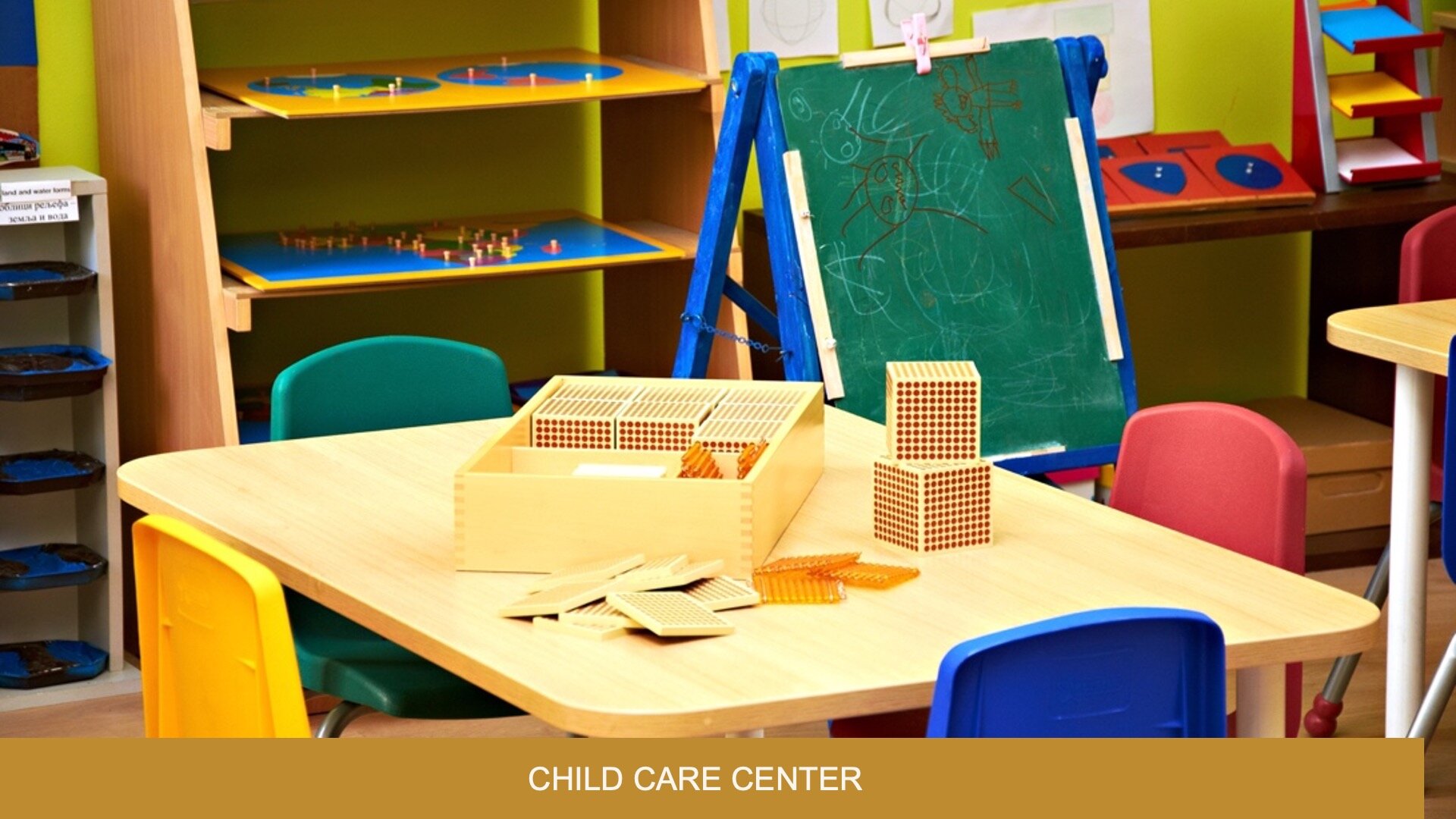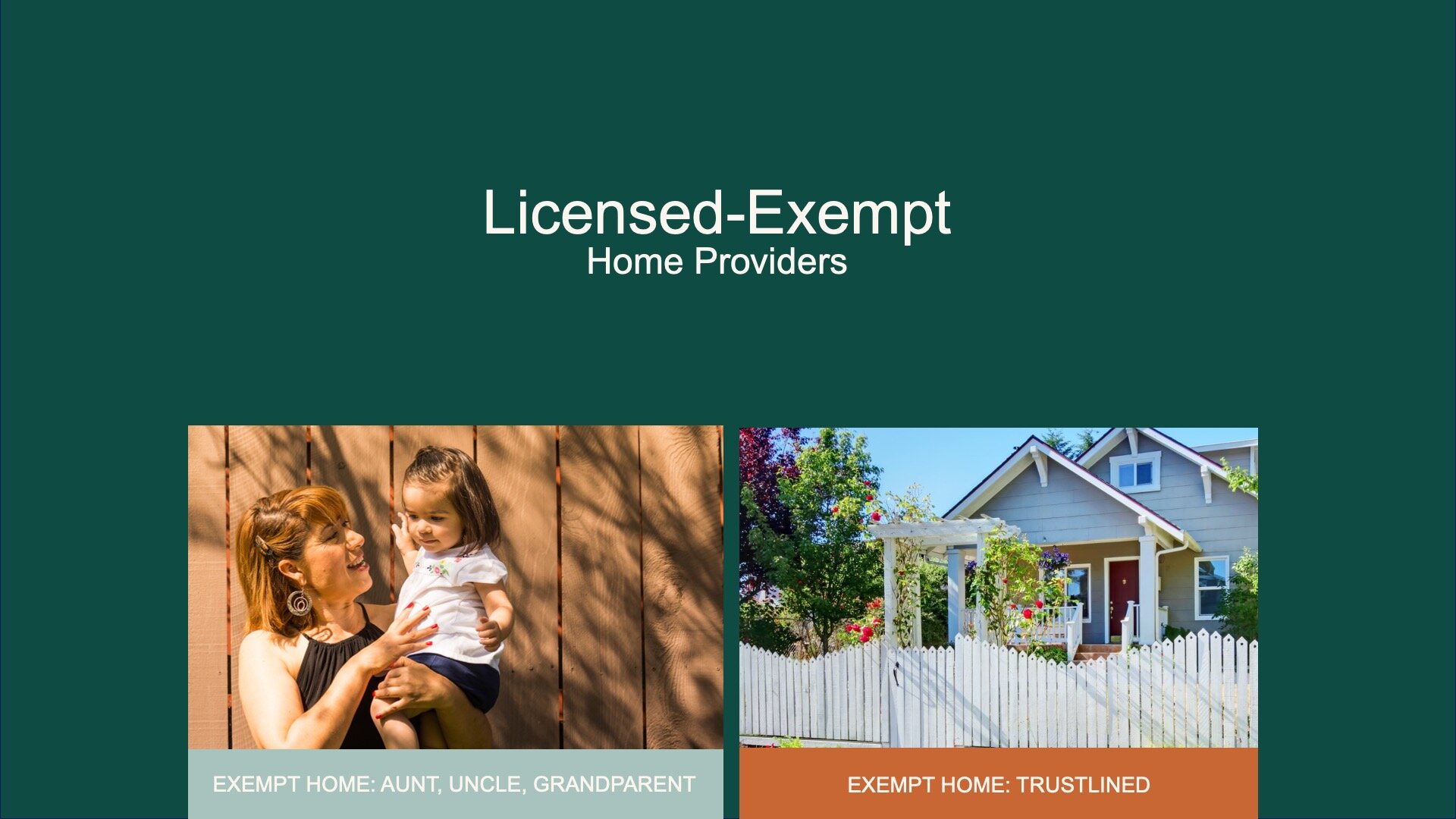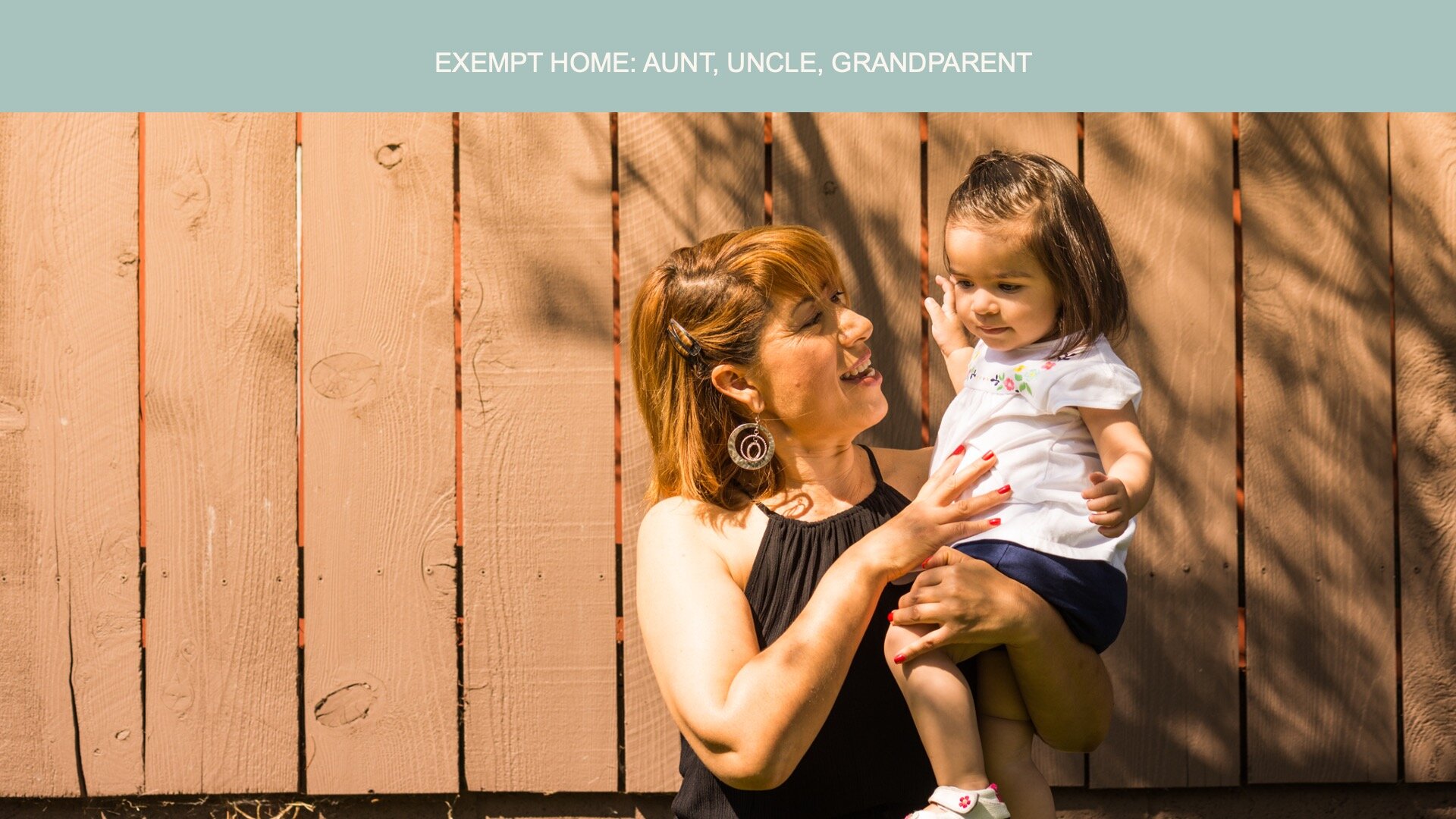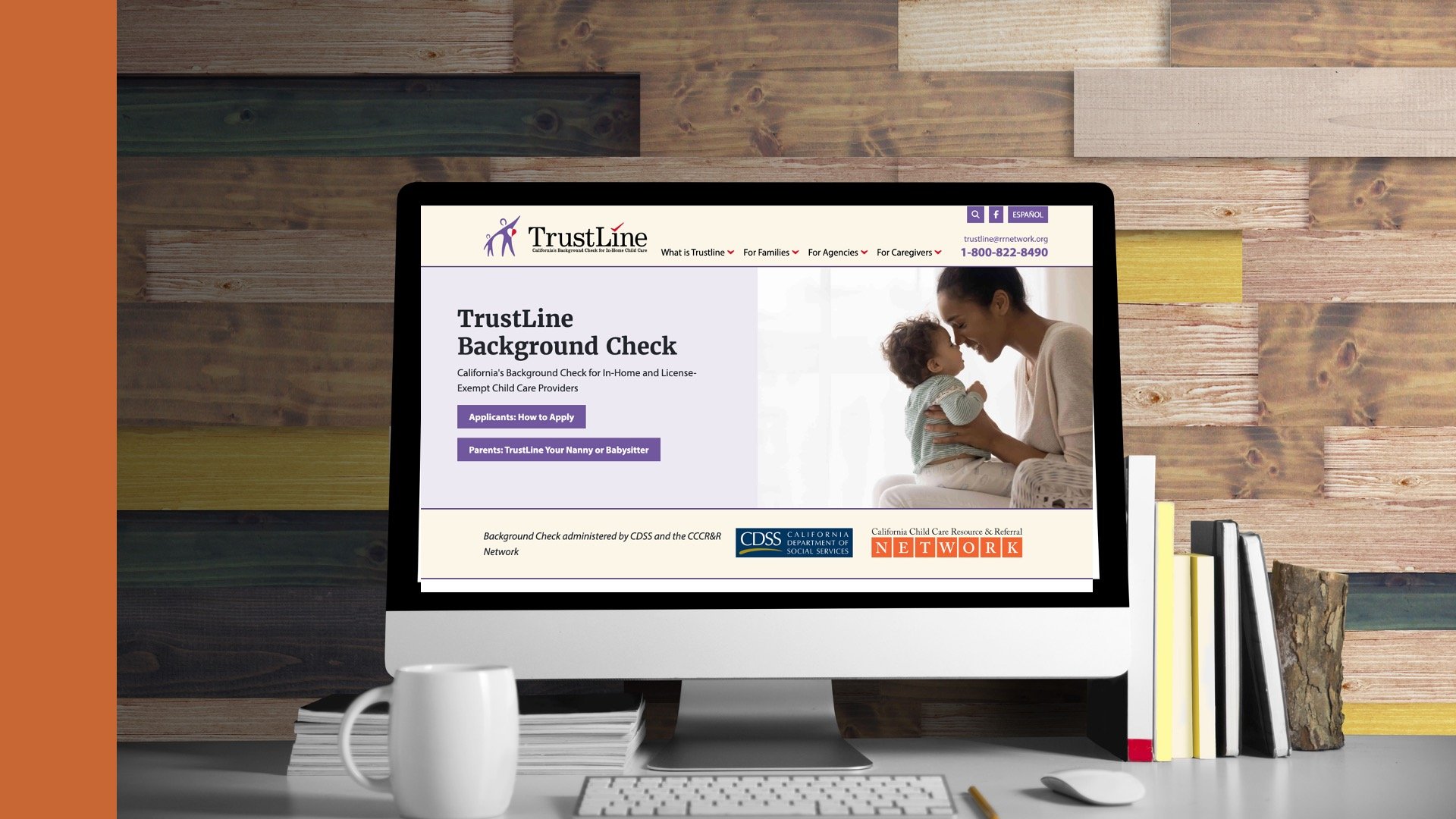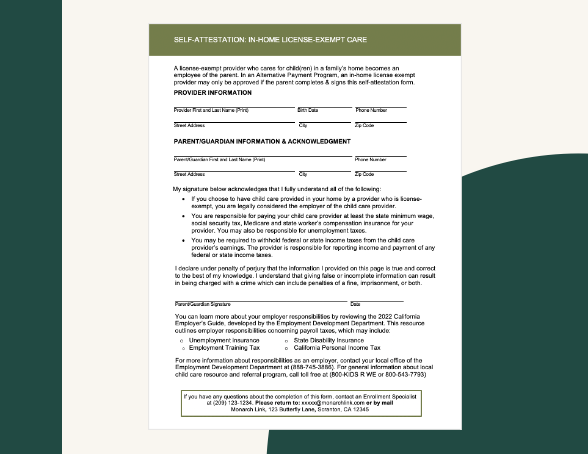Lesson 4
Provider Participation
Requirement
Programs operate on the premise that parents have the right & responsibility to select the most appropriate child care based on their child’s needs.
Regulations/Reference
CCD Program Instrument: III. Program Quality CCD 17
Welfare & Institutions Code: 10228, 10230, 10230.5, 10281.5, 10374.5
Title 5: 18074-18074.6, 18075–18076.3, 18220.6, 18221-18224, 18226, 18228, and 18230, 18231
Monitoring Review Evidence
Policies & Procedures for Provider Participation
Written Materials for Parents & Providers
Watch Video Lesson ❯
Sample Forms/Tools ❯
Review Sketch Pad Notes ❯
Parental Choice
Alternative Payment Programs operate on the premise that parents have the right & responsibility to select the most appropriate child care based on their child’s needs.
Programs must offer an array of parental choice child care arrangements to families such as:
Child Care Center
Licensed Family Child Care Home
Relative (Aunt, uncle or grandparent of the child)
Trustline Cleared (Family member, friend, or neighbor providing services in their home)
What this might look like in a program:
Choosing a child care provider can be overwhelming for a parent. For families that need assistance, agencies refer families to their local Child Care Resource & Referral (R &R). The R&R program has a database of child care facilities, including centers & licensed family child care homes around your community.
Programs may use the Choosing Quality Care Flyer to explain the different child care options available.
Child Care Center
To participate in an AP program, the center must either be:
Licensed, pursuant to the Health and Safety Code
Operate on tribal or federal lands,
A center or program exempt from licensure, pursuant to the Health and Safety Code
According to the regulations, center requirements for reimbursement from an Alternative Payment program include:
Use of sign-in/sign-out documents to record attendance for all children in care
Providing adult supervision for all children during all hours of operation
Signed statement to the program director certifying that all employees who have contact with children have completed criminal history background examinations
Licensed centers are monitored by the state’s Community Care Licensing Division.
Families enrolling in a subsidized child care program must submit specific documentation for the type of child care provider they select.
What this might look like in a program:
An agency will have these requirements built into their provider handbook, along with a signed document saying they understand the rules of participation and/or an agreement for services or contract to participate in the program.
A family may select a licensed Family Child Care Home (FCCH) which is an arrangement in which children are cared for by someone else in their own home.
There are two types of group sizes in which care is provided in a mixed age group setting:
Small licensed family child care home can provide care for up to 8 children
Large licensed family child care home can provide care for up to 14 children
To participate in an AP program, the FCCH must either be:
Licensed, pursuant to the Health and Safety Code
Providing child care services in a home setting on tribal or federal land
Like centers, FCCHs are monitored by the state’s Community Care Licensing Division.
Licensed-Exempt Home Providers
A family may select a licensed-exempt home provider where care takes place in the parent or provider’s home from a provider that is not licensed.
NOTE: An exempt home provider may legally care for 1 family without being licensed; therefore monitoring is the sole responsibility of the parent.
To participate, licensed-exempt home providers must:
Not have active tuberculosis
Not been convicted of any crime involving violence against, or abuse or neglect of children
Submit description of qualifications & work experience
Submit a declaration that he/she is in good health
Have a signed parental statement verifying interview & approval of the caregiver
Submit Identification to verify caregiver is 18 + years old
Exempt Home: Relatives
Licensed-Exempt home providers who are relatives, are defined as an aunt, uncle or grandparent of the child. The relationship between the provider & the child must be by blood, marriage or court decree. The child’s older siblings, great grandparent, great aunts or great uncles do not fall under this category.
Under this provider category, the agency would require a licensed exempt home relative to provide:
Health & Safety Self-Certification
Proof of physical address
Proof of tuberculosis clearance
Exempt Home: Trustlined
Licensed-Exempt home providers who are a family member, friend or neighbor (not deemed a relative) must complete a background clearance through the TrustLine process.
A TrustLined provider must be registered & cleared before reimbursement in a subsidized program.
The TrustLine process includes completing & submitting:
TrustLine application
Fingerprinting through the Live Scan process
Completion of a criminal background investigation
Proof of physical address
Tuberculosis clearance
In-Home Licensed-Exempt Care
For In-Home licensed-exempt providers, care may be approved if the parent signs a self-attestation form acknowledging:
Parent assumes employer responsibilities
Parent will comply with applicable federal & state employment laws
What this might look like in a program:
Contractors include the Self-Attestation: In-Home License-Exempt Care form within the Provider Participation packet.
Recordkeeping
The contractor must maintain records concerning each service provider. Beyond the specific provider type requirements, the file must also contain:
Provider’s current fees, usual & customary services
Rate & schedule of payment signed by provider & contractor (Not applicable to license-exempt FFN)
Name, address & phone number of the service provider
Age group served
Declaration of unlimited access
What this might look like in a program:
The Provider Records sample checklist may help support contractors in gathering required documentation based on provider type.
Complete Knowledge Check ❯
After reviewing the video lesson & sketch pad notes, it’s time to check for understanding by completing a Knowledge Check. Note that Individual Knowledge Checks will conclude with a Certificate.




